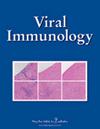调查 SARS-CoV-2 IgG 与 SARS-CoV-2 病毒变体的结合能力
IF 1.2
4区 医学
Q4 IMMUNOLOGY
引用次数: 0
摘要
SARS-CoV-2 大流行证实,快速变异的能力可能对病毒极为有利。在第一波变异后不久,又出现了新的变异株,其感染性、疾病严重程度和死亡率都有所改变。这些新毒株中最明显的是尖峰(S)蛋白发生了大量变异,这种表面蛋白负责与宿主细胞结合并进入宿主细胞。Delta和Omicron菌株的免疫逃避能力增强,与宿主细胞受体血管紧张素转换酶2(ACE2)的结合亲和力提高。本研究检测了野生型 SARS-CoV-2 IgG 与 Delta 和 Omicron 抗原的结合能力,以及它们与两种不同 S-ACE2 复合物的功能结合能力。我们研究了 20 份 SARS-CoV-2 阳性样本,这些样本来自 COVID-19 第一波中感染祖先 SARS-CoV-2 后康复的患者,以及 10 份疫情流行前的对照样本。与对照组相比,SARS-CoV-2 暴露患者对 SARS-CoV-2 S1/RBD(p < 0.001)、N 蛋白(p < 0.001)和 Omicron 穗状变异体(p = 0.01)的 IgG 含量明显更高,但对 Delta 穗状变异体(p = 0.966)的 IgG 含量则不高。此外,患者样本对 SARS-CoV-2 S1/RBD 和 E484K 穗状病毒与 ACE2 结合的抑制作用明显更大(分别为 p < 0.001 和 p = 0.015)。相反,S1/RBD 和 E484K 穗状病毒与 ACE2 受体的结合抑制率之间没有相关性。这项研究表明,野生型 SARS-CoV-2 感染产生的 IgG 与 Delta 和 Omicron 变体存在相当大的交叉反应。本文章由计算机程序翻译,如有差异,请以英文原文为准。
Investigation of SARS-CoV-2 IgG Binding Capability to Variants of the SARS-CoV-2 Virus.
The SARS-CoV-2 pandemic has confirmed that the ability to rapidly mutate may be extremely beneficial for a virus. Not long after the first wave, new variants emerged with altered infectivity, disease severity, and mortality. These new strains most notably had numerous mutations of the spike (S) protein, a surface protein responsible for binding to and entering the host cell. The Delta and Omicron strains demonstrated increased immune evasion and improved binding affinity to the host cell receptor, angiotensin-converting enzyme 2 (ACE2). This study examines the ability of wild-type SARS-CoV-2 IgG to bind Delta and Omicron antigens, as well as their functional binding capabilities to two different S-ACE2 complexes. Twenty SARS-CoV-2 positive samples from patients who had recovered from infection with ancestral SARS-CoV-2 in the first wave of COVID-19 and 10 pre-pandemic control samples were studied. SARS-CoV-2 exposed patients showed significantly higher levels of IgG to SARS-CoV-2 S1/RBD (p < 0.001), N protein (p < 0.001), and Omicron spike variant (p = 0.01), but not to Delta spike variant (p = 0.966) when compared with controls. Furthermore, patient samples showed significantly greater inhibition of SARS-CoV-2 S1/RBD and E484K spike to ACE2 binding (p < 0.001 and p = 0.015, respectively). Conversely, there was no correlation between the binding inhibition of S1/RBD and E484K spike to ACE2 receptor. This study shows there is considerable cross-reactivity of IgG generated by wild-type SARS-CoV-2 infection to the Delta and Omicron variants.
求助全文
通过发布文献求助,成功后即可免费获取论文全文。
去求助
来源期刊

Viral immunology
医学-病毒学
CiteScore
3.60
自引率
0.00%
发文量
84
审稿时长
6-12 weeks
期刊介绍:
Viral Immunology delivers cutting-edge peer-reviewed research on rare, emerging, and under-studied viruses, with special focus on analyzing mutual relationships between external viruses and internal immunity. Original research, reviews, and commentaries on relevant viruses are presented in clinical, translational, and basic science articles for researchers in multiple disciplines.
Viral Immunology coverage includes:
Human and animal viral immunology
Research and development of viral vaccines, including field trials
Immunological characterization of viral components
Virus-based immunological diseases, including autoimmune syndromes
Pathogenic mechanisms
Viral diagnostics
Tumor and cancer immunology with virus as the primary factor
Viral immunology methods.
 求助内容:
求助内容: 应助结果提醒方式:
应助结果提醒方式:


